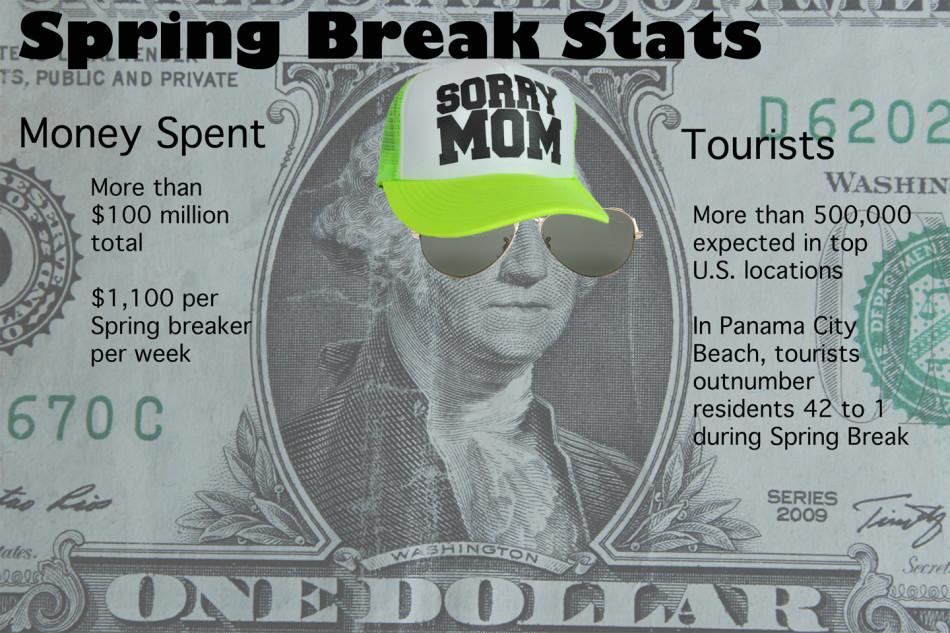The Price of Spring Break
Students, cities both hurt by unruly tourists
Spring Break marks the annual migration of college students nationwide to warmer areas of the country, such as Florida’s Panama City Beach and Key West, and Texas’ South Padre Island.
The influx of students into these cities brings with it a quick spike in the local hospitality industry, as well as a rise in alcohol-related incidents.
Panama City Beach is a prime example of this issue. PCB, as its known to Spring breakers, is the home of MTV’s Spring Break broadcasts and hosts nearly 500,000 students each year during Spring Break season, according to VisitFlorida.com.
PCB has emerged as a Spring Break hot spot due to its low-cost hotel accommodations and abundance of bars and nightclubs with cheaper drink costs than their Key West or Miami counterparts.
These students’ purchase of hotel rooms, alcohol and food for a week in PCB (averaging $1,100 dollars per tourist in 2013), brings in more than $100 million to the local economy.
This money is vital to maintaining PCB’s alluring beaches and beachfront properties, as Florida does not collect state income tax from its residents.
During Spring Break, college students visiting PCB outnumber residents 42 to one, putting the PCB police force in a difficult situation. Each year, the PCB Police receive extra help from the Bay County Sherriff’s Department and Florida State Police to appropriately monitor the visiting students.
However, the economic impact Spring breakers have on PCB cause apprehension on the part of the police, according to a 2013 article in The Atlantic.
The city’s economy cannot afford a crackdown on students’ partying, as this would drive them away as it did in Ft. Lauderdale in the 1980s, but the police must maintain order to keep students, let alone the PCB residents safe.
It’s a classic Catch-22: The PCB police cannot afford to drive away Spring Break tourism with stricter laws or enforcement, but residents, students and the city itself are feeling the negative effects of the party-all-day antics.
Already this year, a visiting student died in a head-on, drunk-driving accident and as student visiting from Texas has gone missing.
Despite the problems they cause, college tourists during the Spring Break season are too valuable for cities to do much to eliminate the activity.
So, for now, the message is “party on, with caution.”




